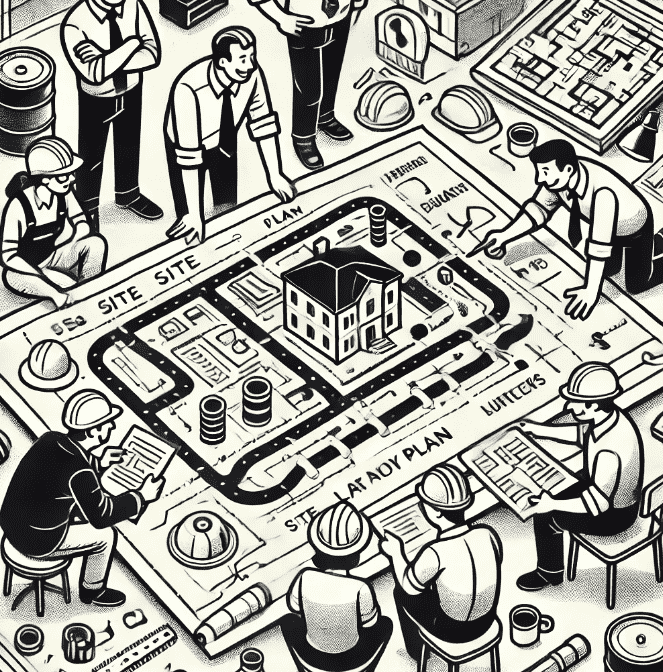A site layout plan is a crucial document in construction and development projects. It provides a detailed representation of the site, including the placement of buildings, infrastructure, and other critical elements.
What is a Site Layout Plan?
A site layout plan is a scaled drawing that illustrates the arrangement of structures, utilities, and other features on a piece of land. It serves as a blueprint for development, ensuring all components are positioned to optimize functionality, safety, and aesthetics.
Key Components of a Site Layout Plan
A comprehensive site layout plan includes:
- Building Placement: The location and orientation of buildings to maximize space utilization and meet zoning regulations.
- Access Routes: Planned roads, driveways, and walkways for efficient and safe movement.
- Utilities and Services: Placement of water, sewer, electrical, and communication lines for accessible essential services.
- Landscaping Features: Integration of green spaces, trees, and gardens to enhance the environment.
- Parking Areas: Designated spaces for vehicles to meet parking requirements.

Importance of a Site Layout Plan
- Efficient Use of Space: A well-designed site layout plan ensures space is used effectively, reducing waste and improving functionality.
- Compliance with Regulations: Proper planning helps comply with local zoning laws, building codes, and environmental regulations.
- Safety and Accessibility: Planning access routes and emergency exits enhances safety for occupants and visitors.
- Aesthetic Appeal: Thoughtful landscaping and building placement improve the visual appeal of the site.
Benefits of a Detailed Site Layout Plan
Regulatory compliance is a significant factor in construction, accounting for nearly 24% of the final sales price of a new home. This includes costs associated with building codes, zoning issues, and other regulations. Efficient site layout planning can help navigate these complexities, ensuring that regulatory requirements are met without unnecessary delays or costs, ultimately reducing their impact on overall project costs (National Association of Home Builders)
Best Practices for Creating a Site Layout Plan
- Collaborate with Professionals: Work with architects, engineers, and planners to create a comprehensive plan.
- Use Advanced Tools: Utilize software like AutoCAD, Revit for commercial projects or Presite for precise and scalable drawings for residential projects.
- Incorporate Feedback: Involve stakeholders in the planning process to address concerns and suggestions.
- Regular Updates: Update the plan as the project progresses to reflect any changes or improvements.
Remember always be planning…
A site layout plan is essential for the successful execution of construction and development projects. It ensures efficient space utilization, regulatory compliance, safety, and aesthetic appeal. By following best practices and collaborating with professionals, you can create a site layout plan that meets all project requirements and exceeds expectations.
To streamline your site layout planning process for residential home projects, try our site plan software.
